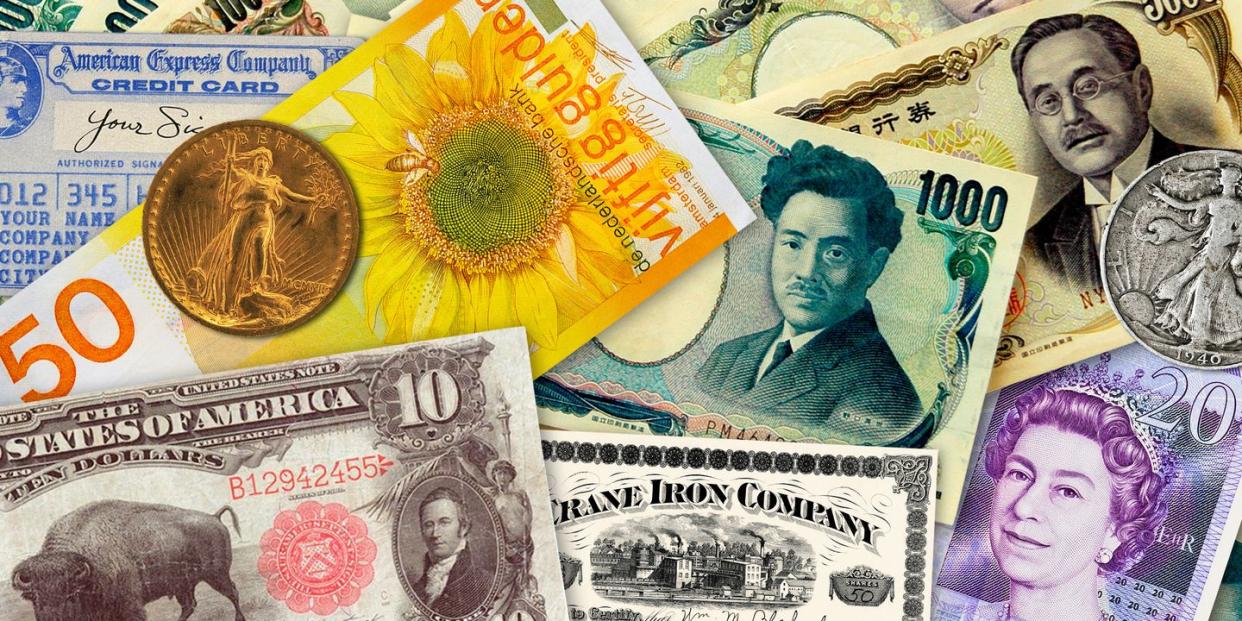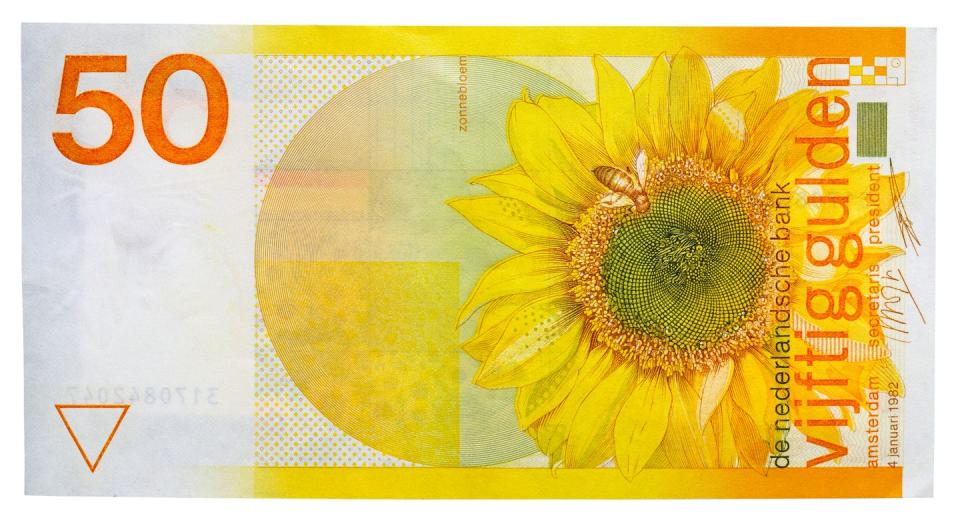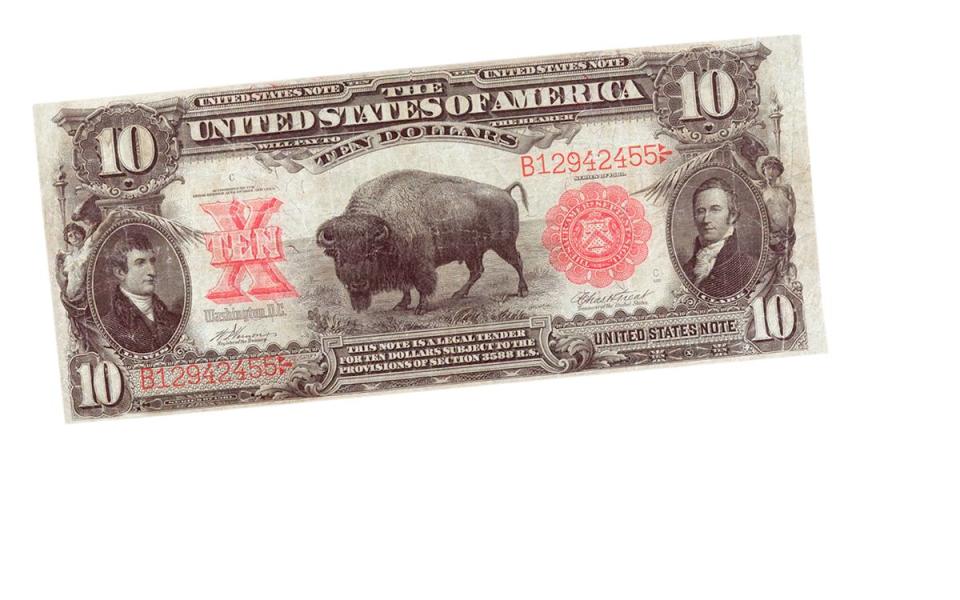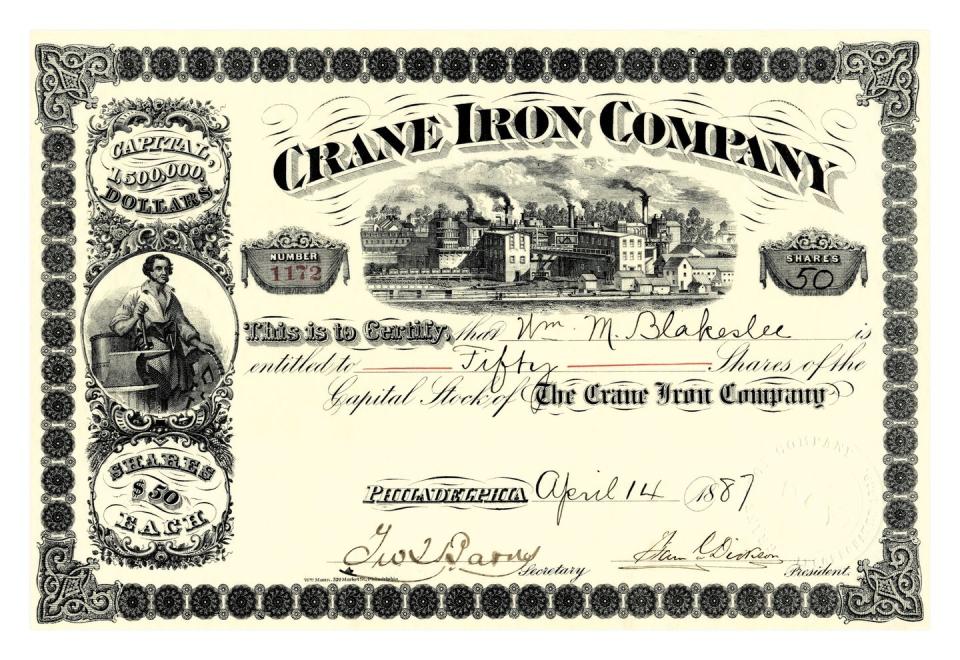Is Pretty Money Harder to Lose?

For a few years in the 1980s and ’90s, my father brought home really good money. I don’t mean his salary; he traveled overseas semiregularly, and he invariably returned with a little bit of currency that he hadn’t re-exchanged. From Greece, drachma coins reading Megas-Alexandros, or Alexander the Great, rendered in bronze. From Japan, a few thousand yen , with curious blank ovals on each printed bill that turned out to be watermarks. And, best of all, from the Netherlands, a 50-guilder note bearing an impossibly elaborate, colorful engraving of a sunflower, every seed and vein visible.
That splashy Dutch flower looked as it did for significant reasons. The design of legal tender requires a high-intensity mix of technology and aesthetics. Paper bills, for example, have to hold up to lots of rough handling. They have to be hard to fake, so they get redesigned often to stay ahead of counterfeiters. They ought to be beautiful, though they aren’t always, and they have to convey something about a nation’s heroes or its national character, all the while looking authoritative and official. Those aesthetic choices carry over to a variety of documents and objects that represent money without actually being it. Stock certificates , in particular, mimic the lacy neoclassical borders of old cash.

The American dollar, despite being the world’s reserve currency, is an aesthetic backwater. That was not always so. In 1905 Theodore Roosevelt personally engaged Augustus Saint-Gaudens, America’s premier sculptor, to redesign the $20 gold piece. The Walking Liberty half-dollar ,created by Adolph Weinman and minted from 1916 to 1947, was another triumph, a little piece of government-issue art in everyone’s pocket. Even simple bills, like the $10 issued in 1901 with a big American bison on the face, are great slices of Americana. That aesthetic was echoed around the world, in part because the American Bank Note Company, headquartered in New York City, printed money for 115 countries.
Paper currency, the thinking seems to go, should not look too modern or minimal. The desirable qualities of stability, longevity, and durability all get a boost when delivered in traditional forms. Currency that doesn’t change much conveys immutability, the way a building with Ionic columns out front and a bronze vault door in the basement once telegraphed “safe.”

The desire for stability in a fast-changing world may be why Americans, who accept and embrace modernity in many things, are extremely leery of any change at all inside their wallets. Our notes, the size and portraiture of which were established in the 1920s, barely changed for seven decades, and by the 1990s they were stodgy relics—yet their relatively high-tech replacements were even worse. (Compare Great Britain, which has chucked £1 and £2 bills in favor of coins, and switched all bills from rag paper
to sheets of tough, thin plastic.)
Our reluctance is odd, given that currency has so little to do with our spending today. Since the U.S. cut its final remaining tether to the gold standard, in 1971, our cash has been entirely fiat currency, backed by faith rather than the metal in Fort Knox. Most of the purchases we all make are even less concrete: You increasingly don’t even need to drop a credit card to pay with one, as anyone with an Amazon account knows.

And now, with the unfettered, ungoverned rise of Bitcoin and all its bizarro siblings, the last relationship between currency and the nondigital world—the stability underlying every exchange that comes with the backing of a government and its army—has begun to disappear. Until you buy a house or a Tesla with it, Bitcoin has no expression in the physical universe at all. (Apart from the gold-tone icon with the double-slashed B.)
Earlier this year the value of cryptocurrencies began a steep decline, wiping out small and large investors alike. Would having something pretty to look at and easy to clench in a fist make it easier to hold on to? Probably not. But at least there would be something to show your kids.
This story appears in the September 2022 issue of Town & Country. SUBSCRIBE NOW
You Might Also Like

